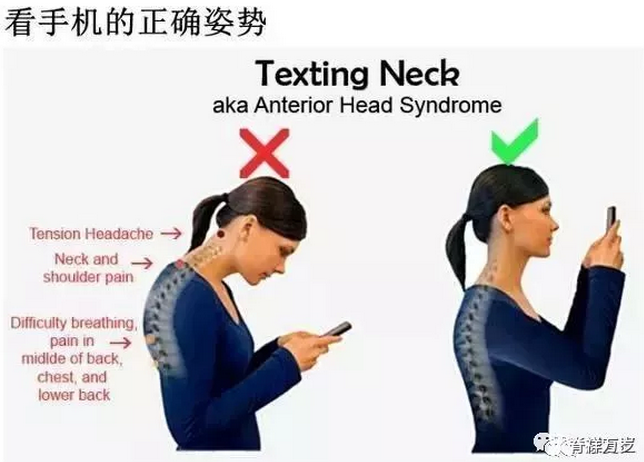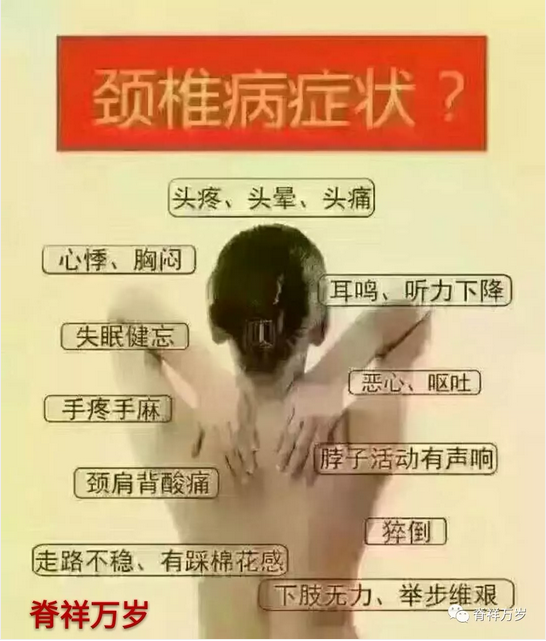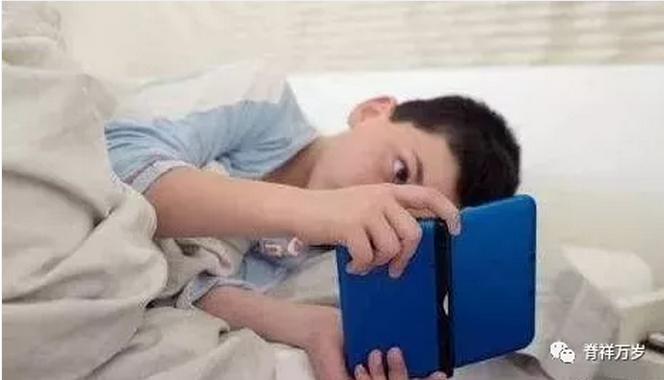
Service hotline:
13533607738
18602592233
Welcome to 广东脊祥万岁健康管理有限公司!
最新资讯
Long time bowing your head to play with mobile phones is "murder" your cervical spine! Recently, the European Spinal Association issued a statement saying, "Text Neck" is a new generation of global diseases! Some people say that maybe this problem is more serious in China. Others say that it is more appropriate to call it "Weixin Neck" or "Mobile Neck" in China. According to reports, a person's head weighs about 5kg, and currently looks at electronic devices such as mobile phones at a 60 degree angle. At this time, due to physical leverage and gravity, a person's neck muscles will bear more than 25kg of weight. "If this posture is maintained for a long time, symptoms such as discomfort, pain, stiffness, headache and even injury of the neck will occur, i.e., short message neck. If this posture is maintained for a long time, these symptoms will aggravate and cause long-term damage such as cervical spondylosis." Experts from the European Spinal Association stressed that "we should pay close attention to the impact of this forward movement, because it has begun to affect the younger generation." The following animation depicts the living conditions of smartphones in the new era. The animation won the first prize of the year of the Central Academy of Fine Arts in 2014. Do you feel the same? This warning from Europe also expresses the worries of Chinese doctors. "Nowadays in China, neck damage caused by mobile phones or electronic handheld terminals has become a very common problem among young people." Professor Ye Huiyang of Taiwan said that the majority of young patients with neck problems in outpatient clinics were related to the irrational use of electronic equipment. In Professor Ye's view, long bows are the problem. The cervical spine is the pivot connecting the head and the body, but because of its fine anatomical structure and large natural range of motion, the stability of the cervical spine is the lowest in the whole spine. Long-term low head will lead to increased pressure of cervical intervertebral disc, relaxation of posterior cervical muscles and ligaments, loss of elasticity, resulting in the disappearance of normal physiological lordosis of cervical spine, and even cause "reverse bending", further accelerating the degeneration of cervical spine. "In animal experiments with cervical spondylosis, we found that severing part of the posterior cervical muscles of normal healthy cervical vertebrates causes the animals to be in a"bowed head"state for a long time, and severe degeneration of the intervertebral disc occurs within a few months." Professor Ye further explained that when looking down at a mobile phone or computer, the muscles in the back of the neck are in a tense state in order to maintain the posture of lowering the head. The lower the head is, the greater the pulling force is on the muscles. If the bowing time is not long, no more than 20 minutes, mainly rely on muscle strength; if the time is longer, muscle fatigue, unable to maintain the bowing position, it will let ligaments out more strength to maintain the position, the longer the time, the neck will be sore. "If you are still in a low head position, the human body will recruit other muscles in the shoulder and back to contract to assist the neck muscles, and then continue to maintain, shoulder and back and even back will appear restraint, slack, sore feeling." Repeated cervical muscle injury, cervical curvature will change, followed by a series of pathological reactions, more symptoms. What are the symptoms and consequences of this for a long time? Professor Ye Huiyang said that according to the degree of cervical pain, stiffness, limited movement, pain and numbness of neck, shoulder and upper limbs, severe limb numbness, weakness, and even different degrees of paralysis will occur in patients with cervical spondylosis. "This is one of the most common orthopaedic diseases that ultimately lead to disability in humans, and we must be highly vigilant." The trend towards younger age has made doctors more worried. "Not only young people, but now many middle school students, even younger children, overuse their computers and mobile phones during holidays and other times, and have problems with their necks as well." Professor Ye believes that we should pay attention to it from infancy. It's not sensational at all.! Professor Ye has paid attention to the cases received: from August 2013 to October 2013, 32 children with cervical discomfort and limited mobility were received. The youngest age was 5 years old, and the oldest was only 9 years old. X-ray showed that 32 patients had different degrees of straightening or even back arch of cervical vertebra. Parents have a long history of bowing their heads, and the addiction to modern digital devices such as mobile phones is a common problem for most children. If not taken seriously, it may develop into other types of cervical spondylosis, with dizziness, nausea, upper limb numbness, gait instability and other symptoms. It is obviously not easy to eliminate or reduce the use of mobile phones and computers. So, how to reduce neck injury? Listen to the doctor. 1.When looking at the mobile phone, hold the mobile phone up. The center of the screen of the mobile phone is at the same height as the eyes, keeping the head in vertical position. 2.Time should not be too long; often change posture. 3.Mobile phones should not be too big or too heavy; they should be good at supporting mobile phones by means of instruments, reducing load, learning the requirement of virtual power in traditional Chinese methods, keeping the head vertical, and consciously pulling the head upward with invisible force on the top of the head. 4.Training the strength of the posterior cervical muscles:Static confrontation training, that is, holding the hindbrain with both hands, exerting the head backward, giving the appropriate strength of the hand to confront, do not bow and head up movement, but static confrontation, lasted 3-5 seconds, relax for 3-5 seconds, then static confrontation, repeated 5-7 times, every hour once, every day can do more than 10 times.





